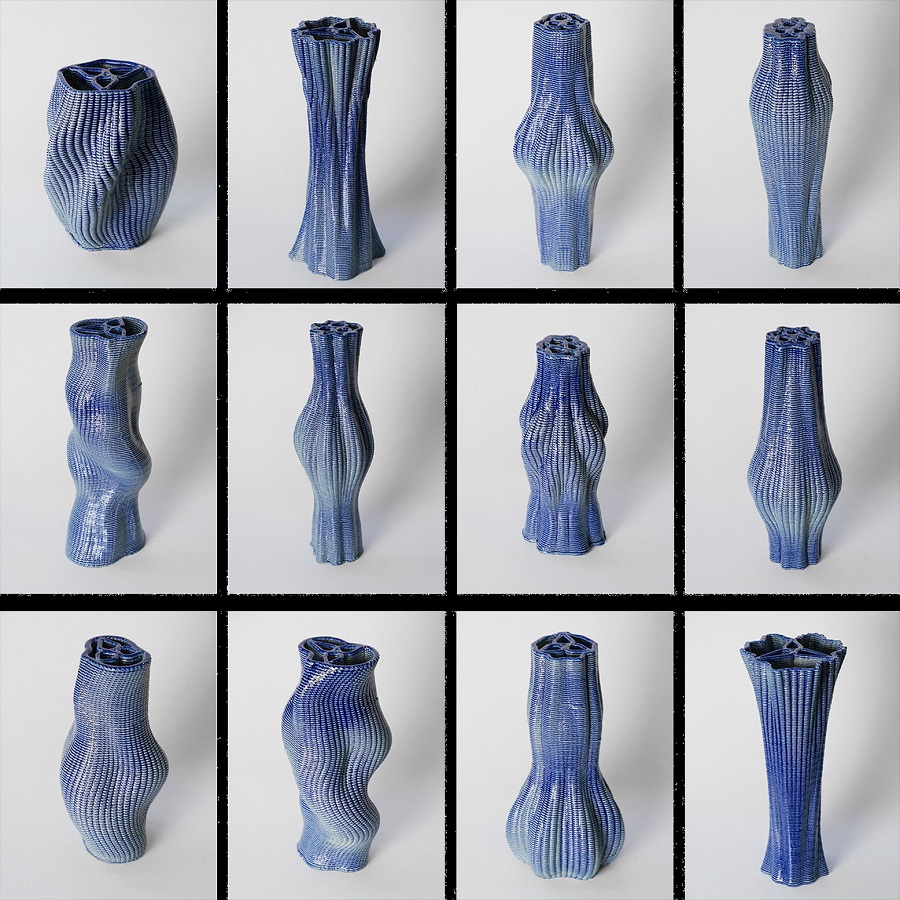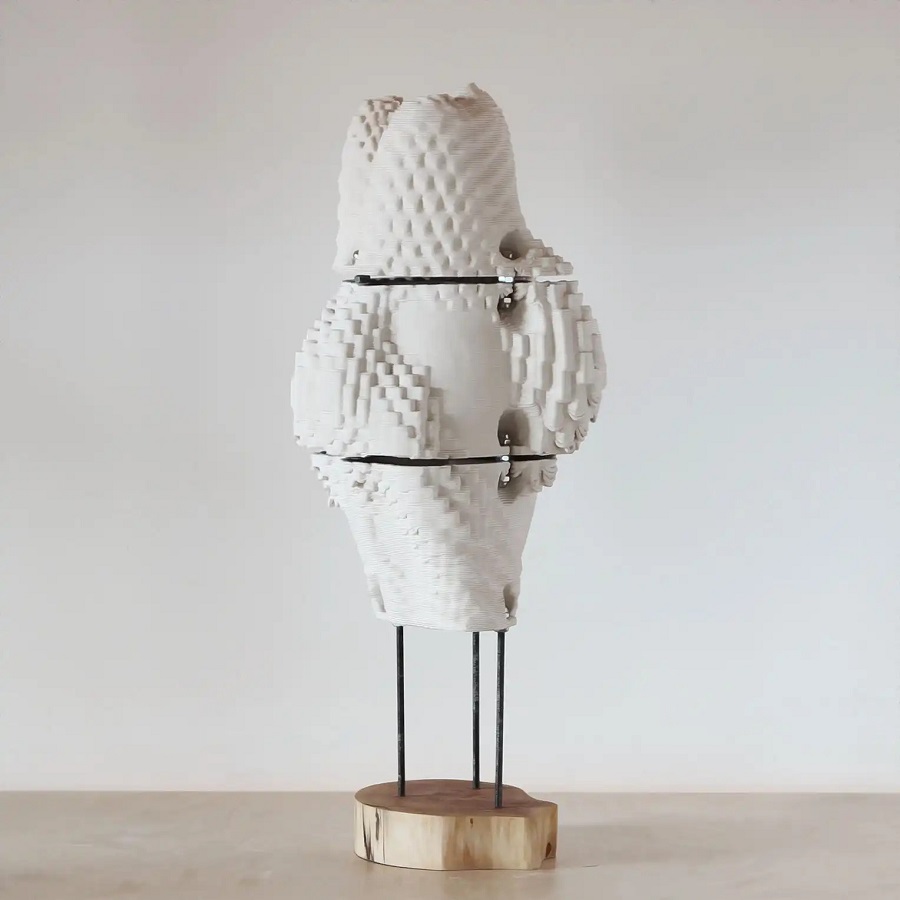Introduction to 3D Printing with Ceramics
3D printing ceramics is transforming the manufacturing world. It allows for the creation of complex, high-precision designs that traditional methods can’t match. This technology combines the age-old artistry of ceramic craft with modern digital innovation. It starts with a digital model. Then, layer by layer, ceramic material builds up to form the final product. Unlike conventional methods, 3D printing introduces much more shape freedom. Thus, designers and engineers can push the boundaries of creation. In industries from aerospace to medicine, the impact is significant. This innovation is setting new standards in product design and functionality. As we delve deeper, we will explore the unique advantages, key technologies, and the vast potential that ceramics offer when combined with 3D printing.

Advantages of Ceramic 3D Printing
Ceramic 3D printing is changing the industrial landscape with numerous benefits. Compared to traditional manufacturing, it offers unparalleled design freedom. Designers are no longer bound by the limitations of conventional techniques. Complex geometries, once thought impossible, are now achievable. This leap in creativity opens exciting opportunities across various sectors.
Not only does 3D printing with ceramics allow for intricate designs, but it also enhances efficiency. Producing complex parts in one piece eliminates the need for assembling multiple components. This saves time and reduces the waste often associated with traditional ceramics production.
Another advantage is the speed of prototyping. Bringing a concept to life can be a lengthy process. With ceramic 3D printing, the time from design to prototype is significantly shortened. This rapid turnaround is invaluable in fast-paced industries where time is critical.
Additionally, 3D printed ceramics exhibit remarkable mechanical properties. The materials used are often of high purity and possess excellent thermal and chemical resistance. These characteristics make 3D printed ceramic parts ideal for demanding applications where resilience is essential.
Customization is another key benefit. The technology permits small batch production without the high costs of mold-making. This is perfect for bespoke designs or tailoring parts to specific applications.
In terms of environmental impact, ceramic 3D printing is a more sustainable option. It minimizes material waste and energy consumption. With an eye on ecological responsibility, it aligns with the growing demand for green manufacturing processes.
To sum up, the advantages of 3D printing ceramics are substantial. They include creative freedom, efficiency, speed, mechanical properties, customization, and sustainability. These benefits are revolutionizing the way we think about and use ceramics in the modern world.
Key Technologies Powering Ceramic 3D Printing
Several key technologies are fundamental to the success of ceramic 3D printing. Let’s delve into the most crucial ones that enable this innovation.
Stereolithography (SLA)
Stereolithography, or SLA, is a pioneering technology in ceramic 3D printing. It uses a light source, like a laser, to harden liquid resin into the desired shape. Ceramic particles suspended in the resin form the solid ceramic item upon firing.
Direct Ink Writing (DIW)
DIW involves extruding a ceramic-filled ink through a nozzle to build objects layer by layer. It’s highly accurate, which is ideal for complex, precision parts.
Binder Jetting
This method deposits a liquid binding agent onto a powder bed of ceramic material. The binding agent acts to glue the powder particles together, layer by layer, until the desired object is formed.
Selective Laser Sintering (SLS)
SLS uses a laser to sinter powdered ceramic material into a solid structure. It’s known for its ability to create durable parts with fine detail.
Robocasting
Robocasting, or robotic material extrusion, is a form of DIW. It utilizes a robotic arm for greater freedom of movement, enabling the creation of more intricate shapes.
Material Jetting
In material jetting, droplets of build material are selectively deposited. It works much like inkjet printing but employs ceramic suspensions to build up the part.
These technologies are core to advancing ceramic 3D printing. They offer precise control over the manufacturing process and enable the production of complex geometries. Overcoming the challenges in precision, consistency, and material properties has marked a significant leap forward. These advancements continue to shape the future of ceramics in manufacturing.

Materials Used in Ceramic 3D Printing
The materials used in 3D printing with ceramics are pivotal for the quality and functionality of the final objects. Primarily, a wide range of ceramic powders is employed, based on the desired characteristics of the end product.
Alumina (Aluminum Oxide)
Alumina is one of the most common materials in ceramic 3D printing. It’s known for its high strength, hardness, and resistance to wear and corrosion. These properties make it suitable for applications that demand durability.
Zirconia (Zirconium Dioxide)
Zirconia is another popular ceramic material with excellent fracture toughness and chemical resistance. It is also highly biocompatible, making it ideal for medical implants and prosthetics.
Silicon Carbide
This material is notable for its high thermal conductivity and low thermal expansion. Silicon carbide is optimal for high-temperature applications, such as in aerospace and energy sectors.
Hydroxyapatite
Hydroxyapatite is primarily used in bioprinting for bone tissue engineering due to its similarity to human bone mineral. It encourages bone growth, making it perfect for customized implants.
Tricalcium Phosphate (TCP)
TCP shares similarities with Hydroxyapatite and is also biocompatible. It’s commonly used for bone graft substitutes in orthopedics.
Glass Ceramics
Glass ceramics offer a unique combination of the properties of both glass and ceramics. They are employed for their translucency and toughness in areas such as dentistry for crowns and bridges.
These materials, when processed through 3D printing techniques, retain their intrinsic properties and can be shaped into complex and precise parts not feasible with traditional methods. By leveraging the characteristics of these materials, ceramic 3D printing is able to produce parts with customized properties for a variety of advanced applications.
Applications of 3D Printed Ceramics
The use of 3D printing ceramics extends across various industries. Each application leverages the unique properties that this form of manufacturing brings to the table. Here are some noteworthy applications:
- Aerospace: In this cutting-edge sector, the lightweight and heat-resistant nature of ceramics are crucial. 3D printed ceramics are used for components like insulation tiles on space shuttles.
- Healthcare: The biocompatibility of certain ceramic materials makes them ideal for medical implants and devices. Custom dental crowns and bone scaffolds are good examples.
- Electronics: High-precision ceramic parts are essential in electronics for insulators or substrates in semiconductor devices.
- Automotive: In the automotive industry, ceramics are used to create durable parts that withstand extreme conditions. These include sensors and engine components.
- Art and Design: The creative freedom of 3D printing with ceramics is a boon for artists and designers. It allows for unique sculptures and functional art pieces.
- Energy: Silicon carbide’s thermal properties are put to use in energy systems for better efficiency and resilience.
These examples show how 3D printing with ceramics is not just a novelty, but a practical solution to modern engineering challenges. Innovations in materials and techniques continue to expand the potential applications for this versatile manufacturing process.
Challenges and Limitations in 3D Printing with Ceramics
Despite the many benefits, there are challenges and limitations in 3D printing with ceramics. Let’s explore some of the common issues faced by this technology.
- Material Properties: Not all ceramic materials are suitable for 3D printing. Some have properties that make them difficult to print with current technologies.
- Print Speeds: 3D printing can be slow, especially for ceramics. Speeding up the process without sacrificing quality remains a challenge.
- Size Limitations: The size of objects that can be 3D printed is often limited by the machine size.
- Resolution and Precision: Achieving fine detail and high-resolution features in ceramic 3D prints is tricky and requires precise control.
- Sintering Complications: Ceramics require high-temperature sintering to gain strength. This can cause shrinkage and warping, which affects the final product’s dimensions.
- Post-Processing: Cleaning and finishing 3D printed ceramic objects can be labor-intensive and require additional skills and resources.
- Cost: While there’s a potential for cost reduction, setup and operational costs for ceramic 3D printing can be high, especially for small-scale production.
- Limited Material Choices: The range of ceramic materials available for 3D printing doesn’t match the variety available in traditional ceramics yet.
Understanding and overcoming these challenges is key for the future growth of ceramic 3D printing. Efforts are ongoing to improve the technology and expand its possibilities. Despite the obstacles, the potential for innovation and advancement in the field is immense.

Future Trends in Ceramic 3D Printing
Looking ahead, the trends in ceramic 3D printing signal a bright future. Here are some predictions:
- Improving Print Quality and Speed: Innovations are likely to enhance print precision. Improving speed will also be a focus.
- Expanding Material Choices: Researchers are developing new ceramic materials. These materials will offer more options for various applications.
- Larger Scale Printing: Advances may allow for bigger print jobs. This could open doors to larger ceramic components.
- Increased Adoption in Industry: As costs fall and technology improves, more industries will adopt ceramic 3D printing.
- Progress in Bioceramics: Medical uses of bioceramic materials will expand. These include prosthetics and dental applications.
- Smarter Software Integration: Software for design and simulation will get better. This will make the tech easier to use and accessible.
- More Sustainable Practices: The push for eco-friendly methods will grow. It will guide the development of new 3D printing ceramics processes.
These trends are shaping a future where the potential of ceramic 3D printing is fully realized. It moves this field from a niche to a mainstream manufacturing option.
Conclusion: The Potential Impact of Ceramic Additive Manufacturing
As we conclude, the future of 3D printing with ceramics looks promising. This technology, also known as ceramic additive manufacturing, holds the potential to revolutionize how we make things. The impact is clear: from producing complex parts with ease to customizing designs on demand, the possibilities are vast.
Ceramic additive manufacturing can shift entire industries toward more efficient and innovative production methods. In aerospace, lightweight components crafted through 3D printing can lead to fuel savings and better performance. In healthcare, personalized implants could mean faster recovery and better quality of life for patients. For electronics, precise and durable parts can enhance product functionality and longevity.
The environmental benefits are also noteworthy. By reducing waste and focusing on sustainability, ceramic 3D printing supports the shift to greener manufacturing practices. This aligns with global efforts to preserve our environment for future generations.
Yet, as exciting as these prospects are, challenges still stand. Overcoming the limits in speed, size, and material variety will be key to unlocking the full impact of ceramic 3D printing. Research and development are ongoing, and each stride forward brings us closer to an era where ceramic additive manufacturing is a standard across sectors.
Embracing the evolution of this technology will be essential for businesses and creators alike. Those who adapt will find themselves at the forefront of a new wave of innovation. In summary, ceramic additive manufacturing is not just changing the landscape of manufacturing; it’s paving the way for a future laden with breakthroughs and remarkable advancements.